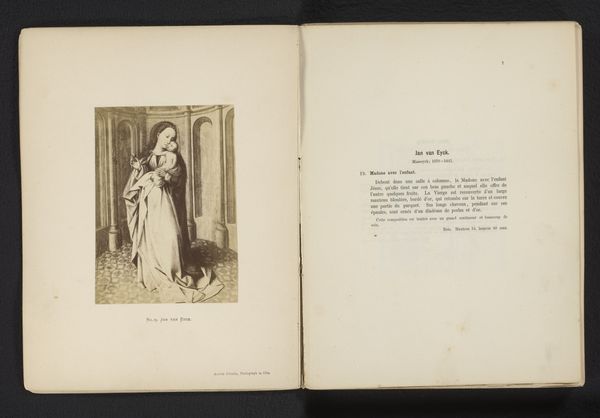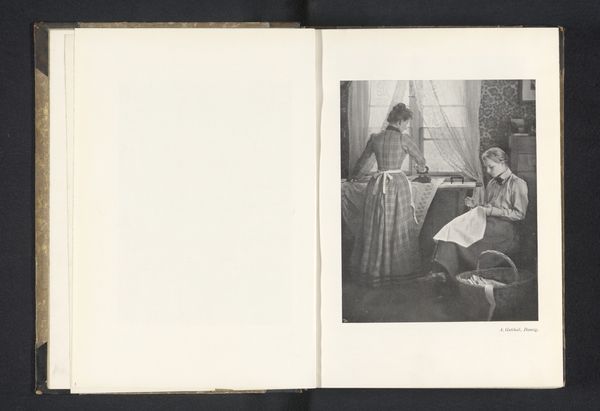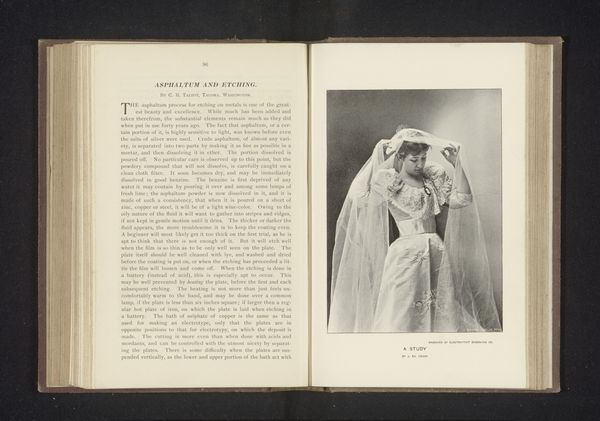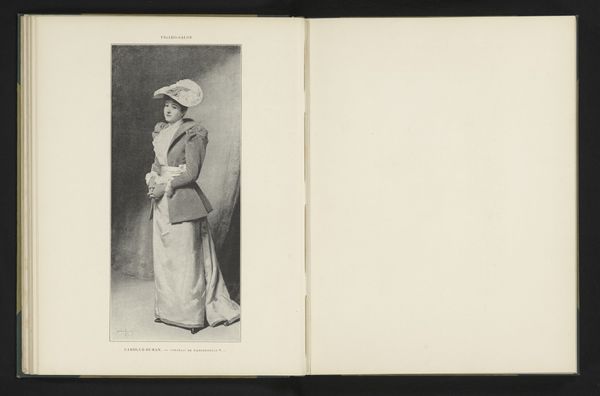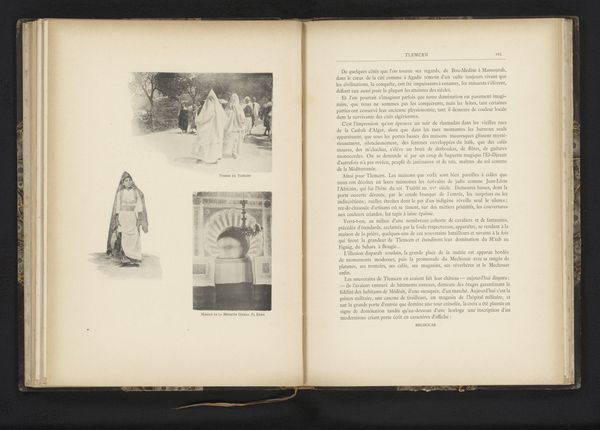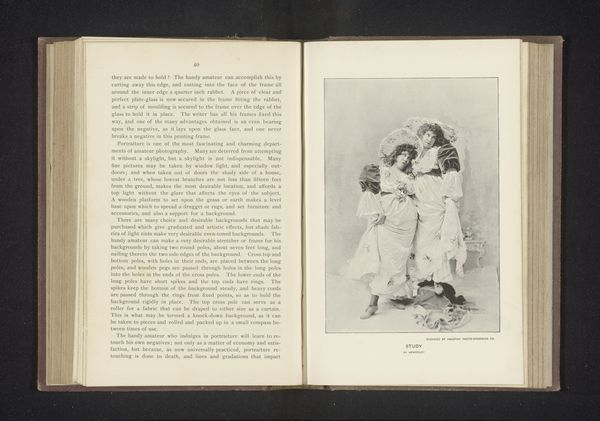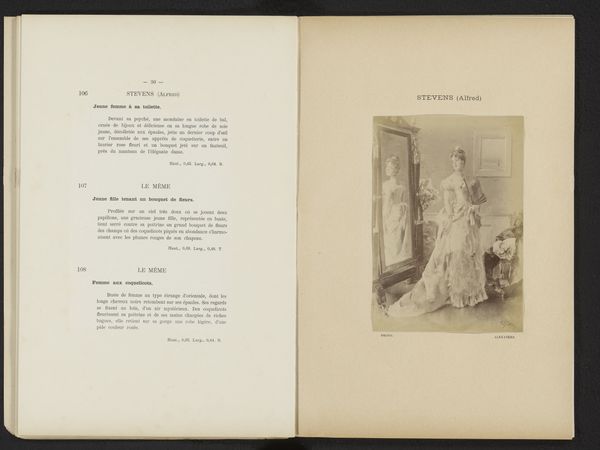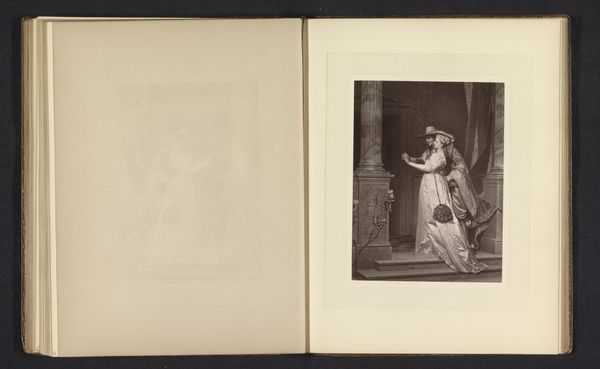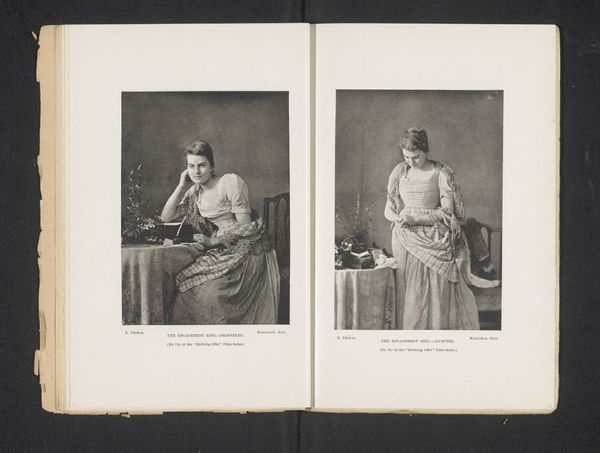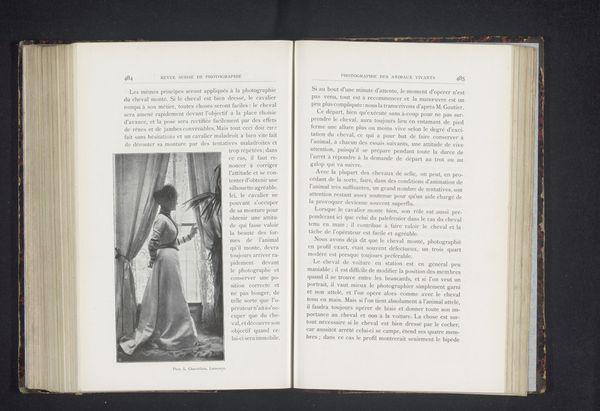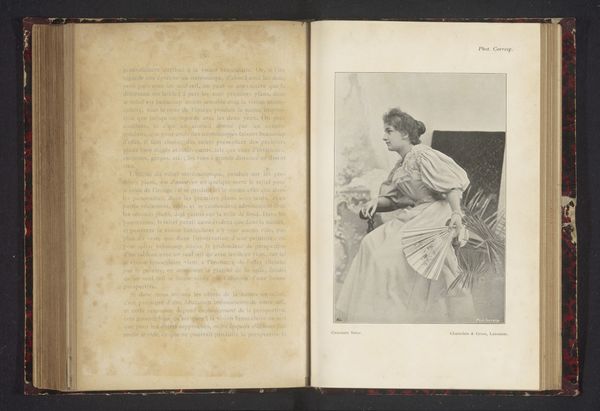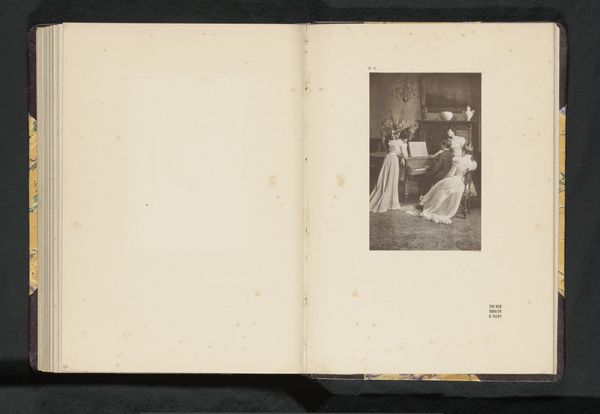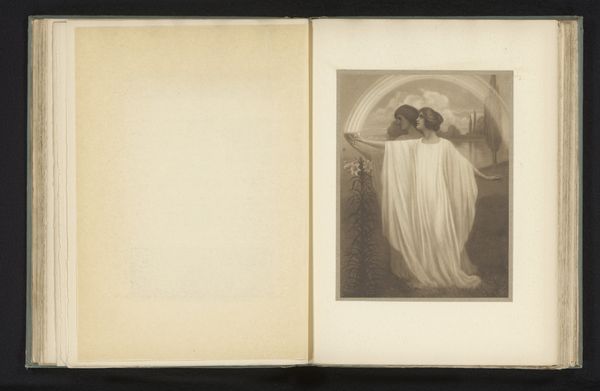
photography, albumen-print
#
portrait
#
pictorialism
#
photography
#
nude
#
albumen-print
#
historical font
Dimensions: height 120 mm, width 84 mm
Copyright: Rijks Museum: Open Domain
Curator: Before us, we have a photographic piece titled “Portret van een onbekende vrouw, op de rand van een bad,” or “Portrait of an unknown woman, at the edge of a bath,” an albumen print likely created before 1890. It’s presented within an open book, with a second image next to it. Editor: The contrast! The image strikes me as a staged narrative, but one with quiet vulnerability. The soft focus, almost like a dream, but also maybe commenting on the very staged-ness of femininity. Curator: I am drawn to the details of its production: the albumen print process itself involved coating paper with egg whites, creating a smooth surface for the photographic chemicals. That careful labor immediately connects it to historical practices in women’s craftwork and labor. And what statement does it make showing that practice in mass production? Editor: It’s true. Pictorialism was about asserting photography as art, and these photographers were consciously emulating painting styles, the soft focus mimicking brushstrokes. It makes me think of questions around artistic labor, authenticity, and even the idealization of the female form prevalent in the late 19th century. Whose gaze is really at play here? Curator: Exactly. And what's especially poignant here is this sense of staged intimacy made possible through chemistry. How does manipulating materials help shape this narrative? Editor: Right. Think of the darkroom practices—how the photographer controlled the image. Also the bathing is…oddly demure, especially if positioned next to classical nudes. I find myself thinking about the limited roles available to women then—beauty, domesticity… how does photography reinforce or subvert those roles? Curator: These albumen prints—the labor involved in creating them as objects, made to record a certain ideal—that juxtaposition is especially telling. We get two constructed images packaged inside one book. Editor: Absolutely. It brings such critical complexity to what we thought of simply as early photography, no?
Comments
No comments
Be the first to comment and join the conversation on the ultimate creative platform.

